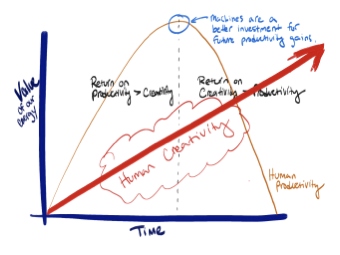SmartQA Digest
Efficiency is a given now, high productivity aided by intelligent systems will become a norm, so what is our role? In this age of automated & continuous testing, efficiency gains are given and productivity is on the increase. In this era of AI systems, it is time we shift from productivity to creativity.
Aytekin Tank says Ford reduced the manufacturing time of car from 12 hours to 2.5 hours by improving efficiency, breaking the company’s Model T automobile assembly into 84 distinct steps, with a worker specialising in a task and using power-driven machinery to do the work. Then the focus shifted to productivity, not efficiency. In the age of AI and machine learning, just being more productive won’t cut it. Creativity is the new productivity says Scott Belsky.
Read more in this week’s beEnriched article Efficiency -> Productivity -> Creativity.
In this smartbits video “DFT& Automation” Girish Elchuri outlines how design for testability aids in test automation. There are three aspects to be looked at when we talk about test automation, he says. The first one is running the test cases, the second, invoking the functionality that needs to be tested and the third, asserting the outcome tests as success or failure. We can talk about test automation only if we can automate all these three functions.
beEnriched

Efficiency -> Productivity -> Creativity
February 21, 2020
Efficiency is a given now , high productivity aided by intelligent systems will become a norm, so what is our role? In this age of automated & continuous testing, efficiency gains are given and productivity is on the increase. In this era of AI systems, it is time we shift from productivity to creativity.
expandMind

The Laws of Medicine: Field Notes from an Uncertain Science
October 24, 2019
Siddhartha Mukherjee investigates the most perplexing cases of his career ultimately identifying three principles that govern modern medicine.



